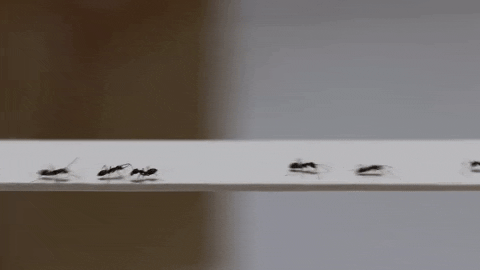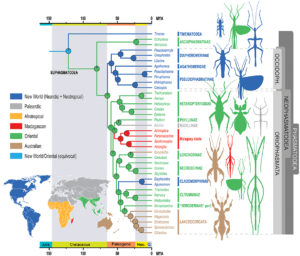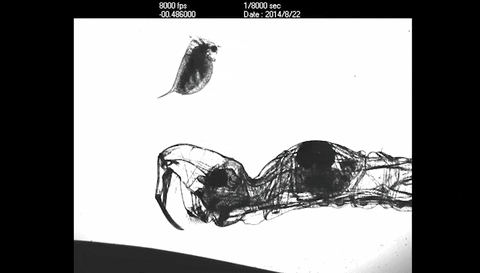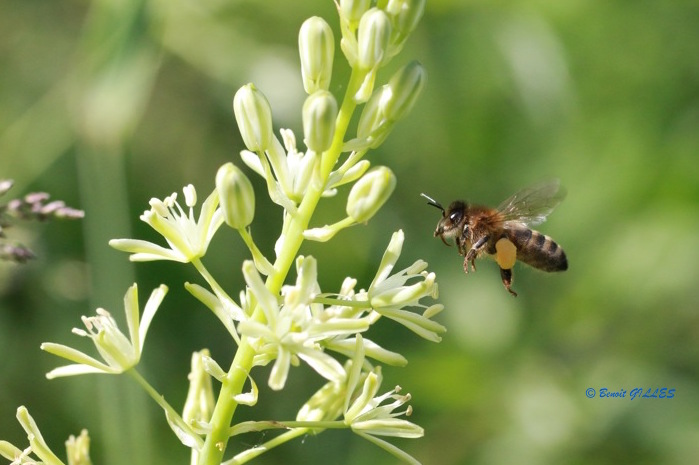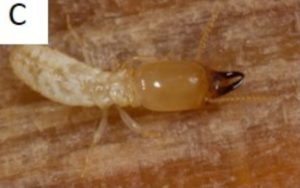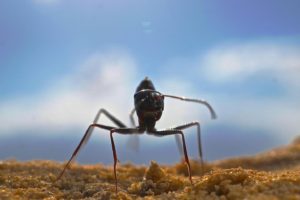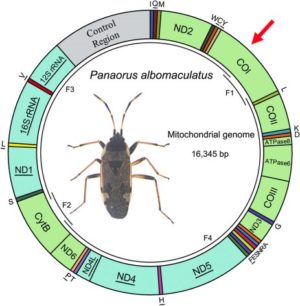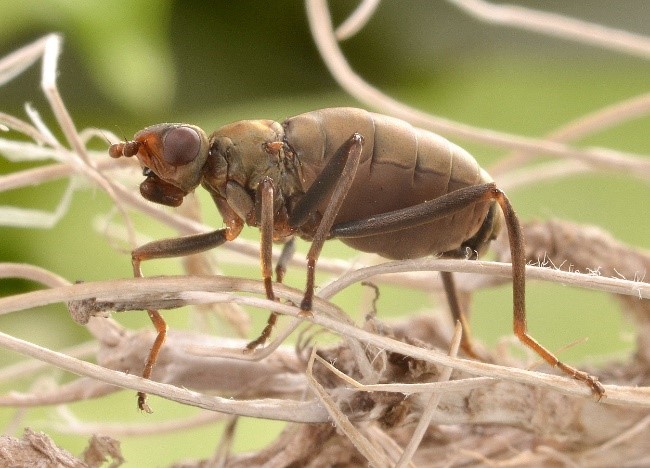By Laure-Anne Poissonnier Insect societies have long been part of the human imagination. Ants appear, for example, in fables, tales, and science fiction novels. They are often attributed to human qualities: the ant is hardworking, selfless, and well organized. It is true that when one observes an ant colony, one is forced to marvel at…
Tag: biology
Evolutionary history of phasms and phyllies
by Benoit GILLES The Order of Phasmatodea (phasms and phyllies), composed of more than 3,100 species and 500 genegenes, is one of the oldest groups of insects. They are popular for their ability to camouflage themselves in vegetation. Their morphology, sometimes displaying extravagant shapes, makes them look like twigs, leaves or bark in order to…
Stomoxes: biting flies harmful to breeding
By Gérard Duvallet Among the ectoparasites that are a nuisance to livestock and livestock in general, there are, alongside ticks (Mites), several families of Dipterans (Insects). Horn stomoxes and flies (Diptera, Muscidae) and taons (Diptera, Tabanidae) are certainly the most important (photos 1, 2 and 3), due to the nuisance spawned and the possible transmission…
Chaoborus: a lightning attack
by Benoit GILLES The trophic chains of ecosystems such as those found in small ponds are structured in several levels. The first group consists of the so-called primary organisms, constituting phytoplankton, producing their energy from minerals and light energy through the photosynthesis process. At the base of the food chain, these organisms serve as food…
Insect disappearance: Causes and consequences
by Benoit GILLES With their presence on Earth for more than 400 million years, their diversity, their adaptability and their abundance, insects are an unprecedented biological success and an essential component to life on our planet. Today, one organism living on two and three out of four animals belong to their order. The ecological functions…
Scale insects: Poorly-know vectors of plant virus
by Etienne Herrbach Exciting study models The scales from the vast superfamily of Coccoidea, rich of over 8,000 species and 33 families (and 16 fossils) (link). Like their sternorrhynchan cousins (aphids, whiteflies, and psyllids), they feed on plant saps using a piercing-sucking mouth apparatus. Their very diverse and sometimes astonishing biological and morphological peculiarities foster numerous studies.…
Termites (Part 1): Biology
by Guillaume BAUDOUIN General The Author: Guillaume Baudouin Following a university course between Angers, Rennes and Poitiers, Guillaume completed his thesis on the problem of termites in Paris as part of a project carried out between the IRBI (Institute of Research on the biology of the insect) and the city hall of Paris between 2013…
The memory of the desert ants
Odometer at Cataglyphis Fortis The Cataglyphis Fortis have the ability to return to the nest although they are in complete darkness. How do they estimate the distance to which the nest is located, and this in a straight line? A team of Swiss scientists led by Matthias Wittlinger (link) showed that the ant estimates the…
DNA & Taxonomy Barcode
by Philippe GARCELON This article is based on the work done by the researchers David Porco, and Louis Deharveng (National Museum of natural history) who exploit the genetic tool and were kind enough to send me documents related to their research on Springtails. Introduction Despite the emergence of genetic identification techniques, on the basis of the DNA…
The Entomofauna of the French subantarctic islands
by Maurice Hulle The Subantarctic islands, among the most isolated in the world, harbour a small number of native terrestrial invertebrates which, in the course of their evolution, have developed specific biological adaptations, the most notable of which is the loss of The flight function in insects. Since their recent discovery and, above all, since…

